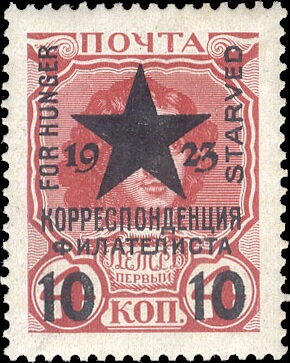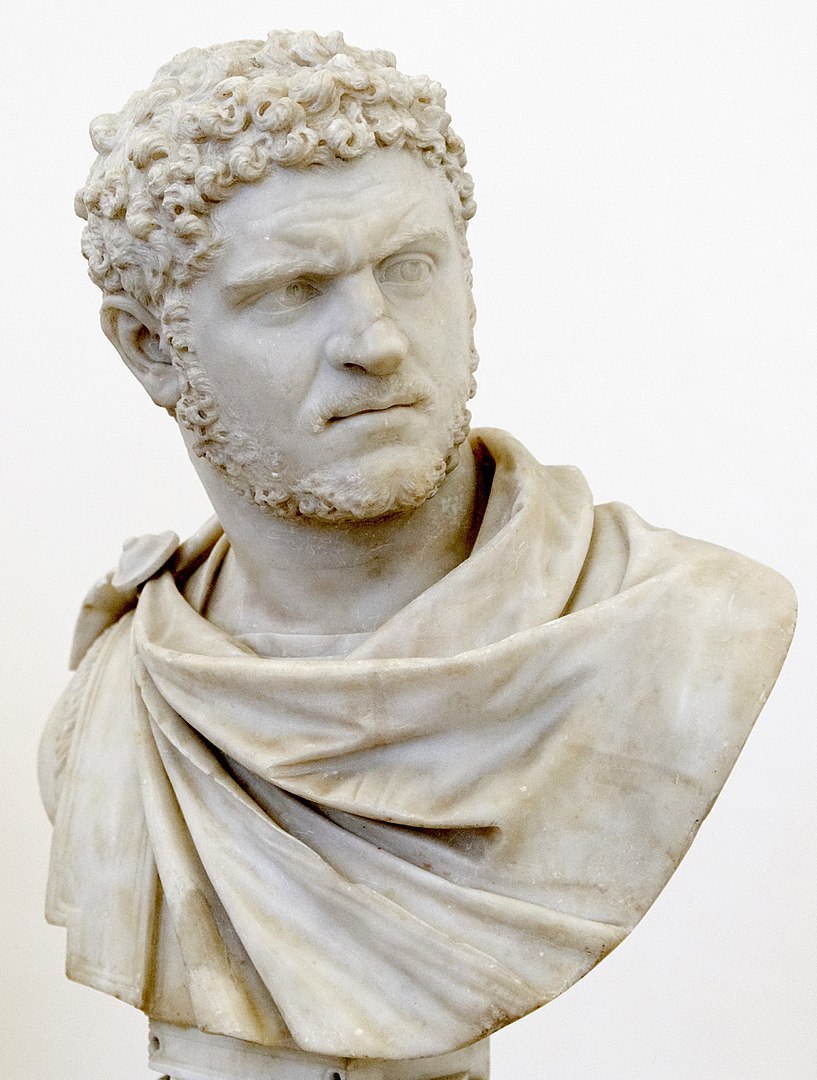Stamp: Emperor Peter I (Russia, Civil War Regional Issues 1923)
Emperor Peter I (Russia, Civil War Regional Issues 1923)
01 January (Russia, Civil War Regional Issues ) within release Vladivostok/Chita (Exchange Control) goes into circulation Stamp Emperor Peter I face value 10 Russian kopek
| Stamp Emperor Peter I in catalogues | |
|---|---|
| Michel: | Mi: RU-TC I |
| Yvert et Tellier: | Yt: RU-TC US1 |
Stamp is vertical format.
4 kopek stamp of 1913 with a lithographed surcharge in black This is a revenue stamp which was used to pay a tax on stamp exchanges. It was withdrawn shortly after being issued on instructions from Moscow. Listed under "Tausch-Kontrollmarken" in Michel and "Timbres d'Usage Spécial" (special usage stamps) in YvertAlso in the issue Vladivostok/Chita (Exchange Control):
- Stamp - Coat of Arms of the Post and Telegraph Department of Russia face value 15;
- Stamp - Coat of Arms of the Post and Telegraph Department of Russia face value 15;
- Stamp - Coat of Arms of the Post and Telegraph Department of Russia face value 15;
- Stamp - Emperor Peter I face value 10;
- Stamp - Empress Catherine II face value 10;
Stamp Emperor Peter I it reflects the thematic directions:
An anniversary is the date on which an event took place or an institution was founded in a previous year, and may also refer to the commemoration or celebration of that event. For example, the first event is the initial occurrence or, if planned, the inaugural of the event. One year later would be the first anniversary of that event. The word was first used for Catholic feasts to commemorate saints. Most countries celebrate national anniversaries, typically called national days. These could be the date of independence of the nation or the adoption of a new constitution or form of government. The important dates in a sitting monarch's reign may also be commemorated, an event often referred to as a "Jubilee".
The word emperor (from Latin: imperator, via Old French: empereor) can mean the male ruler of an empire. Empress, the female equivalent, may indicate an emperor's wife (empress consort), mother/grandmother (empress dowager/grand empress dowager), or a woman who rules in her own right and name (empress regnant or suo jure). Emperors are generally recognized to be of the highest monarchic honour and rank, surpassing king. In Europe, the title of Emperor has been used since the Middle Ages, considered in those times equal or almost equal in dignity to that of Pope due to the latter's position as visible head of the Church and spiritual leader of the Catholic part of Western Europe. The emperor of Japan is the only currently reigning monarch whose title is translated into English as "Emperor"
Famous People refers to the fame and public attention accorded by the mass media to individuals or groups or, occasionally, animals, but is usually applied to the persons or groups of people (celebrity couples, families, etc.) themselves who receive such a status of fame and attention. Celebrity status is often associated with wealth (commonly referred to as fame and fortune), while fame often provides opportunities to make money.
A head of state (or chief of state) is the public persona that officially represents the national unity and legitimacy of a sovereign state. In some countries, the head of state is a ceremonial figurehead with limited or no executive power, while in others, the head of state is also the head of government. In countries with parliamentary governments, the head of state is typically a ceremonial figurehead that does not actually guide day-to-day government activities and may not be empowered to exercise any kind of secular political authority (e.g., Queen Elizabeth II as Head of the Commonwealth). In countries where the head of state is also the head of government, the president serves as both a public figurehead and the actual highest ranking political leader who oversees the executive branch (e.g., the President of the United States).
Philately (/fɪˈlætəli/; fih-LAT-ə-lee) is the study of postage stamps and postal history. It also refers to the collection and appreciation of stamps and other philatelic products.While closely associated with stamp collecting and the study of postage, it is possible to be a philatelist without owning any stamps. For instance, the stamps being studied may be very rare or reside only in museums.
A star is a luminous spheroid of plasma held together by self-gravity. The nearest star to Earth is the Sun. Many other stars are visible to the naked eye at night; their immense distances from Earth make them appear as fixed points of light. The most prominent stars have been categorised into constellations and asterisms, and many of the brightest stars have proper names. Astronomers have assembled star catalogues that identify the known stars and provide standardized stellar designations. The observable universe contains an estimated 1022 to 1024 stars. Only about 4,000 of these stars are visible to the naked eye—all within the Milky Way galaxy.






